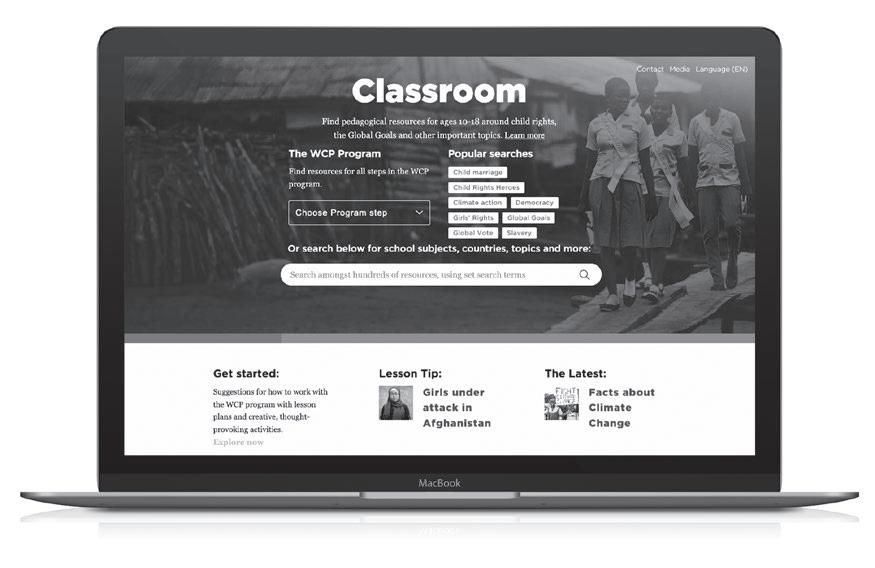
1 minute read
Do girls where you live have…
Listen To Girls
… the right to play, rest and leisure time (article 31 in the UN Convention on the Rights of the Child). Often, girls do the cleaning, laundry, cook meals and look after younger siblings while their brothers get free time. What’s it like where you live?
the right to go to school and enough time for homework
… the right to decide when to get married … the right to protection from violence from a parent or partner
Resources
the right to not be subjected to harmful traditional practices?


✲ Facts and stories about girls’ rights on p. 25–41 in The Globe and on wcp.global/girlsrights



✲ Many other stories in The Globe about girls’ lives are found, for example, in the jury section, and in stories about the Child Rights Heroes, especially on p. 52–67.
Use stories about Bindu from Nepal, or Alcina from Mozambique, who was married off and had to leave school (p. 16–17 in The Globe ) as starting points for this activity.

Girls and boys have the same right to say what they think and participate in decisions that affect them. Choose a story in The Globe as your starting point.
1. Read the story aloud to the class. It can be, for example, about Bindu who was trafficked (p. 20–21), or about Djiba and Anita who both want to be heard (p. 28–31).
2. Ask everyone to think quietly about the story to themselves for 1–2 minutes. Have they experienced or seen anything similar happen where you live?
3. Let the students talk about the story in pairs using these questions:
• What injustices do girls experience that do not affect boys?
• What has the girl herself done to make others listen to her?
• Has the girl received any help from others, such as a parent, a teacher or her peers? Has anyone made her situation worse?
• What would you do in the girl’s situation?
• Could something similar happen where they live?
4. Gather everyone and have students give examples of what they talked about.
5. Read Articles 12–15 aloud in The Globe (p. 9), about the equal right for all children to be listened to and make their voices heard. Then, depending on which story you are working with, pick a suitable text about girls’ rights from p. 26–27, for example about Article 33 or p. 34–35 and read it aloud.
6. The students work in groups of four and imagine they are organizing a rally for equal rights for girls inspired by the story you read. What messages would they write on their signs? Ask each group to come up with at least three suggestions.
7. Gather everyone and let them show their ideas to each other. Then finish with reflection and open questions.










